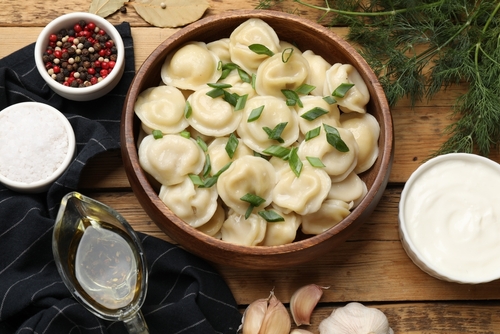As the world rings in the New Year on January 1st, another, quieter celebration waits in the wings. For millions of people in Eastern Europe, the Balkans, and beyond, the real festivities happen on January 14th. This is the Orthodox New Year, a holiday steeped in centuries of history, rich traditions, and deep cultural significance.
It’s a time when families gather, special foods are prepared, and old customs are honored to welcome the year ahead. Whether you’re part of a diaspora community keeping traditions alive or simply curious about global cultures, understanding the Orthodox New Year offers a fascinating glimpse into a unique and cherished celebration.
The Story Behind the “Old New Year”
The Orthodox New Year exists because of a difference in calendars. For centuries, many countries, particularly those in the Orthodox Christian world, used the Julian calendar. In 1582, Pope Gregory XIII introduced the Gregorian calendar to more accurately reflect the solar year.
Much of the world gradually adopted the Gregorian calendar, but many Orthodox Churches and the nations they influenced continued to follow the Julian calendar for religious and state matters. Today, the Julian calendar runs 13 days behind the Gregorian calendar. This is why January 1st on the Julian calendar falls on January 14th on the Gregorian calendar.
Though many of these countries now officially use the Gregorian calendar for civil purposes, the “Old New Year” (or Stary Novy God in Russian) remains a beloved, unofficial holiday. It’s a chance to extend the festive season, celebrate with a sense of nostalgia, and honor cultural heritage.
How Orthodox New Year Is Celebrated Today
While the New Year on January 1st is often marked by large public events, the Orthodox New Year is typically a more intimate, family-oriented occasion. It’s less about grand fireworks and more about the warmth of home and community.
Food and Feasting
Food is central to the celebration. Families prepare elaborate feasts featuring traditional dishes. In Russia and other Slavic countries, this often includes a second round of holiday favorites:
- Olivier Salad: A creamy potato salad with meats, eggs, and vegetables.
- Dressed Herring: A layered salad with pickled herring, beets, potatoes, and carrots.
- Pelmeni or Vareniki: Dumplings filled with meat or other savory fillings, sometimes with a “surprise” like a coin or peppercorn hidden inside for good luck.
In Serbia, the celebration is known as Srpska Nova Godina. Families might enjoy roasted pork, sarma (cabbage rolls), and a special cornbread called česnica. In Romania, festive meals often include pork dishes, believed to symbolize abundance.
Family and Community Traditions
Gathering with loved ones is the most important part of the Orthodox New Year. It’s a time for multi-generational families to come together, share a meal, exchange small gifts, and reflect on the year past.
- Music and Toasts: Traditional folk music often fills the home, and heartfelt toasts are made for health, happiness, and prosperity in the coming year.
- Community Events: In some diaspora communities, cultural centers host events with live music, dancing, and traditional food, helping to pass these customs to younger generations.
- Visiting Friends: Similar to the main New Year, it’s common to visit friends and neighbors, sharing food and good wishes.
Modern Trends and Evolutions
While rooted in tradition, the celebration of Orthodox New Year is also evolving. For many, it’s a “bonus” holiday—a more relaxed and less commercialized alternative to the January 1st festivities. Young people, especially those living abroad, often use it as an opportunity to reconnect with their cultural identity.
Social media plays a role in connecting diaspora communities, with families sharing photos of their feasts and celebrations online. It has become a quiet but powerful way to preserve and share cultural heritage across continents.
The Orthodox New Year is more than just a calendar quirk; it’s a testament to the endurance of tradition. It’s a day that connects the past with the present, providing a cherished opportunity for families to come together and celebrate their unique cultural legacy.
Frequently Asked Questions
Which countries celebrate Orthodox New Year?
Orthodox New Year is celebrated in countries with large Eastern Orthodox Christian populations, including Russia, Ukraine, Belarus, Serbia, Montenegro, North Macedonia, Georgia, and Kazakhstan. It’s also observed by diaspora communities from these regions around the world.
What is the date of Orthodox New Year 2026?
In 2026, the Orthodox New Year will be celebrated on Tuesday, January 14th. The date remains consistent each year.
Why is it sometimes called “Old New Year”?
It’s called “Old New Year” because it marks the start of the new year according to the Julian calendar, which was the “old” calendar used before the widespread adoption of the Gregorian calendar.
Is Orthodox New Year a religious holiday?
While its origins are tied to the Orthodox Church’s use of the Julian calendar, the holiday is largely a cultural and traditional celebration today rather than a strictly religious one. It is a day for family and community connection.
